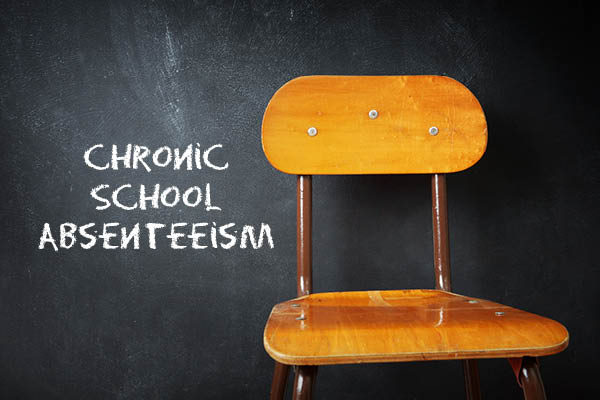Educators and public officials across Baltimore City and Maryland know that kids chronically missing school is a problem. The hard part is coming up with a solution, according to a series of stories on the issue published by The Baltimore Sun.
Thousands of Baltimore City students missed at least 60 days of school in the 2022-2023 school year, and nearly half missed at least 10% of school days – the definition of chronic absenteeism. Absenteeism is also a problem statewide.
City Council members, state lawmakers and education experts offer a variety of suggestions:
1) Catch the problem early
Creating good attendance habits at an early age is an important factor. Schools must start early to help children in socializing and normalizing that going to school is not optional. Expanding pre-K is a goal of state leaders as part of the Blueprint legislation. Low-income families with 3- and 4-year-old children are now eligible for free pre-K, with the goal of expanding later to subsidized pre-K for 4-year-olds in families making less than 600% of the federal poverty level, equivalent to $187,000 per year for a family of four.
The city could play a role in the proposed expansion by using some city buildings as pre-K classrooms.
2) Focus on tutoring and social promotion
City school students can be held back for only one year in elementary school and one year in middle school. In high school, they must earn a sufficient number of credits to graduate.
Data obtained by The Baltimore Sun shows upward of 95% of pre-K, elementary and middle school students are promoted to the next grade even if they’ve missed more than a third of the school year. Social promotion paves a path toward failure instead of success, says Nat Malkus, deputy director of education policy at the American Enterprise Institute.
If there are no consequences for lack of achievement and results, more kids are going to be moved along without the necessary learning. Teachers should start early flagging struggling students and providing additional support so that they can catch on again.
Should social promotion policy be changed? While some absent kids may be dealing with issues like pregnancy, personal loss, medical issues or completing work outside of school, it’s not helpful to promote kids who are not proficient in the subject matter, says one public official. “If you’re reading below grade level, and then you’re not able to actively participate in the conversation, you have a sense that you’re failing. That is where and when we start to see children disengaged from school.”
More tutoring should be provided for kids who are falling behind, says Kalman Hettleman, a former member of the Baltimore City school board and the Maryland Commission on Innovation and Excellence in Education. “When students are a few years behind, they feel like dummies in the class and they have less motivation to go to school,” he says.
3) Consider virtual school options
Offering virtual options could help some students, says Republican State Delelgate April Miller of Frederick County. This could include students with chronic illnesses, those who are bullied at school, or students who thrive in the virtual learning environment. Miller plans to propose a bill that would require virtual options for students who want them.
4) Push back school start times
Another bill Miller proposed and intends to propose in the upcoming session would push back school start times to no later than 8:30 a.m. for high school and 8 a.m. for middle school. An Abell Foundation report proposed shifting middle and high school start times to no earlier than 8:30 a.m. It’s not uncommon that a student would need an hour to get to school, using one to three buses, according to the report.
If a student has their first class at 7:30 a.m., they need to wake up at 5:30 a.m. to get ready and arrive on time. Investing in systems that allow for school start times that provide adolescents the opportunity for more optimal sleep are also investments in their academic success and their physical and mental health, the report states. In the second decade of life, a child’s internal clock shifts to a later bedtime, says Laura Sterni, director of the Johns Hopkins Pediatric Sleep Center and one of the editors of the report. “If you’re a teenager, you can’t go to bed at 7:30 anymore,” Sterni says. “And then we get them up super early to get off to school, at a time where they should still be sleeping.”
Anne Arundel County shifted school start times to 9:15 a.m. for middle school and 8:30 a.m. for high school in the 2022-2023 school year.
5) Fix transportation
Increasing the frequency of buses on school routes could help reduce absenteeism, said Jamal Turner, who mentors city school students through The Nolita Project. Most students at city schools in the 2023-2024 school year used public transportation or walked to get to school. Around 7%, or 5,188 students — most in elementary school — rode school buses, according to the Abell Foundation report. The Maryland Transit Administration operates 185 school routes every school day, says Veronica Battisti, MTA’s senior director of communications and marketing. It’s not unusual for public school students in urban environments to use public transportation, she added.
6) Focus on future careers
Some recommendations focus on trade schools and apprenticeships. Be sure kids know that they have options. Provide more early college opportunities. “Part of what motivates kids to show up at school is knowing that there’s a light at the end of the tunnel, which is a family-sustaining wage, a career or a college opportunity,” says Baltimore City Council President Zeke Cohen.
7) Spend money more effectively
The Blueprint for Maryland’s Future proposes billions of dollars in education improvements but doesn’t directly address chronic absenteeism. Blueprint advocates note that elements like “concentration of poverty” funds and behavioral health supports can help kids who frequently miss school.
Sen. Jill Carter, a Baltimore City Democrat, says the key is to better allocate the funds that are already being spent. Nonprofits could do a better job of fixing problems like chronic absenteeism, she says. “I think we do need to hold our nonprofits more accountable than we do, and we need to make sure that all of the resources are not being held at the top or stagnated at the top, but are trickling down to the people that are actually doing the work.”
Carter also says she’ll propose a bill this coming session that would add a section or unit within the state’s education department dedicated to addressing truancy.
Spending should represent your most urgent needs and your priorities, says Mary Washington, the state senate’s education subcommittee chair, when asked about adding absenteeism reduction to the budget agenda. “And you make adjustments.”
The Baltimore Sun





